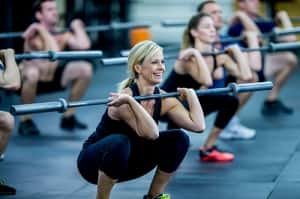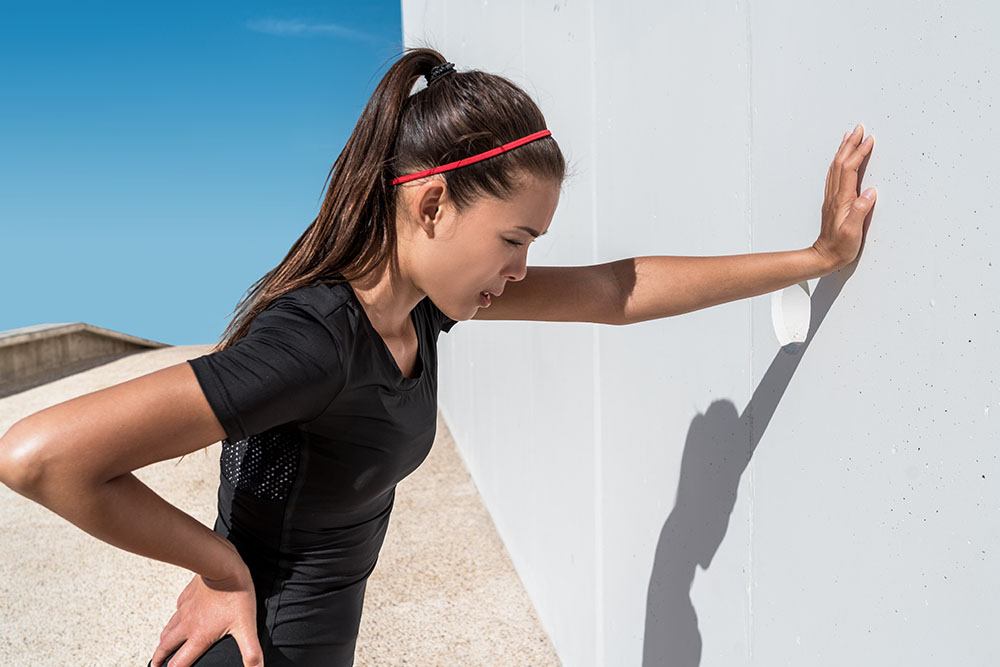Grip Strength Is An Indicator of Whole Body Strength

Hunter Bennett
As we age, we tend to see general declines in health, and more importantly, general declines in whole body function. It is these declines in function that can result in the loss of independent living, in which they can also act as a precursor to the onset of more severe age-related diseases.
The development of a simple and easy measure of whole body function has been such a game changer.
Enter grip strength.
What is grip strength?
As I am sure you could have worked out in your own, grip strength refers to the strength of your grip.
In this manner, it can be defined as the force applied by your hand to squeeze or grip an object, which is dictated by the strength of the muscles that comprise your hands and forearms.
How is grip strength measured?
Given what grip strength is, it should really become quite obvious as to how grip strength is measured – by squeezing things.
Well, to be more specific, by squeezing what is known as a handgrip dynamometer.
A handgrip dynamometer is a specific device that fits within the palm of your hand. This device is altered to the individual size of your hand to ensure a more accurate reading, after which you squeeze it is hard as you possibly can.
It then measures the amount of ‘squeezing’ force that you produce with your hand, thus identifying your grip strength.
While there are myriad of different handgrip dynamometers on the market, they all do the same thing and have been shown to be quite reliable and effective (Wang, 2010).
Why does grip strength matter?
Now, while it seems pretty obvious that the strength of your grip is important when it comes to the successful performance of simple hand-based tasks, you might still be wondering what all the fuss is about?
I mean, a firm handshake is all well and good, but doesn’t it stop there?
Well, no, not really…
Related Article: Increase Strength, Increase Lifespan – Powerlifting Could Change Your Life
Grip strength as a predictor for whole body strength
You see, the thickness of the hand and forearm muscles has been shown to have strong associations with measures of whole body skeletal muscle mass – so if you have larger ‘grip muscles’, you are going to be more likely to have more muscle mass across the rest of your body (Morimoto, 2017).
With this in mind, grip strength has long been used as a surrogate measure for whole body strength.
In fact, handgrip strength as measured by a handgrip dynamometer has been shown to have rather strong associations with measures of lower body muscle power, knee extension muscle strength, and even calf muscle mass (Di Monaco, 2015).
All of which is pretty interesting if you ask me.
Grip strength as a predictor for health
In conjunction with the research showing some associations between grip strength and whole body strength, there is also some evidence that suggests it may have a role predicting health.
Because it is an accurate indicator of whole body skeletal muscle mass, low measures of grip strength have also been shown to identify the onset of sarcopenia – which obviously makes sense when we consider that sarcopenia is a disease typified by age-related muscle wastage (Sousa-Santos, 2017).
Interestingly, the same has been said for cardiovascular disease and diabetes. The exact reason for these associations remains somewhat unclear (Mainous, 2015).
Does improving grip strength ward off age-related diseases?
Now, this is where things get interesting.
You see, in conjunction with low levels of grip strength having associations with disease, illness, and functional strength, declines in grip strength have also been shown to indicate an increase in the severity of these same outcomes (Miller, 2010).
Which makes quite a bit of sense if you think about it.
If your grip strength is declining, it is likely doing so via a loss of muscle mass. Loss of muscle mass can only really occur through declines in physical activity.
And given that physical inactivity is a known risk factor for almost every disease known to man, well, it seems quite obvious that this association exists.
However, the same can’t be said for improvements in grip strength.
In fact, while simply performing specific grip exercises will undoubtedly improve your grip strength, it is unlikely to cause any major improvements in the health outcomes mentioned in detail above (Buckner, 2018).
So, what’s the deal?
The controversy of grip strength as a measure of whole-body strength
You see, the thing to remember here is that all of this data showing associations between grip strength, health, and whole body strength is just that – association data.
This simply means that those individuals who have lower levels of grip strength are more likely to have these diseases than those with higher levels of grip strength.
But it does not mean that low levels of grip strength cause these diseases.
In my mind, low levels of grip strength simply suggest that an individual is less likely to participate in physical activity (namely resistance training). As a result, they are less likely to have moderate amounts of muscle mass. Therefore, they will be at a significantly higher risk of pretty much every disease and illness on earth.
So while handgrip strength certainly has the capacity to act as an indicator for disease and function, it shouldn’t be used as a standalone measure.
What are the other indicators of whole body strength?
At the present time, there are a number of simple strength measures that are thought to act as a surrogate measure for whole body strength and function. One that appears to have the most merit is quadriceps strength.
Measures of quadriceps strength simply identify the functional strength of your quadriceps muscles. Quadriceps strength is most commonly measured via a machine known as an isokinetic dynamometer.
Much like handgrip strength, quadriceps strength has been shown to provide an indication of whole body strength and various diseases.
But, where it seems to differ is that it has also been shown to have a direct link between certain measures of functional performance and quality of life. This indicates that it may act as a better representation of whole body strength than grip strength alone.
This is likely due to the fact that this key measure is directly related to the muscle mass of the lower limbs. They are significantly larger and functionally more important to many daily tasks than the muscles of the hands and forearms.
Related Article: 3 Ways Lifelong Exercise Prevents Aging
So, where the research is heading?
While handgrip strength can indicate both whole body strength and general health and wellbeing, its decline is not the cause of these issues.
Moreover, we have also established that quadriceps strength may actually act as a better indicator of these factors. It is important to note that currently, the tools used to measure quadriceps strength, are extremely expensive. This severely limits their applicability in real-world testing scenarios.
This is its biggest downfall.
So what next?
Well, in my opinion, future research needs to identify a cheap, simple, and effective measure of quadriceps strength that can be performed anywhere, and under any conditions. This would not only provide a more accurate indication of health and function but could be used in conjunction with handgrip strength to better indicate the global health of the whole body.
But I guess only time will tell if this can be done effectively.
Take Home Message
A low level of grip strength has the potential to indicate declines in both health and function. However, improvements in grip strength alone will cause improvements in health. Grip strength should not be used as a standalone measure.
References
Wang, Ching-Yi, and Li-Yuan Chen. “Grip strength in older adults: test-retest reliability and cutoff for the subjective weakness of using the hands in heavy tasks.”. Archives of physical medicine and rehabilitation 91.11 (2010): 1747-1751.
Morimoto, Akio, et al. “Association between hand muscle thickness and whole-body skeletal muscle mass in healthy adults: a pilot study.”. Journal of physical therapy science 29.9 (2017): 1644-1648.
Di Monaco, Marco, et al. “Handgrip strength is an independent predictor of functional outcome in hip-fracture women. A prospective study with 6-month follow-up.” Medicine 94.6 (2015).
Sousa-Santos, A. R., and T. F. Amaral. “Differences in handgrip strength protocols to identify sarcopenia and frailty-a systematic review.”. BMC geriatrics 17.1 (2017): 238.
Mainous III, Arch G., et al. “Grip strength as a marker of hypertension and diabetes in healthy weight adults.”. American journal of preventive medicine 49.6 (2015): 850-858.
Miller, Douglas K., et al. “Predictors of change in grip strength over 3 years in the African American health project.”. Journal of aging and health 22.2 (2010): 183-196.
Buckner, Samuel L., et al. “The Association of Handgrip Strength and Mortality: What Does It Tell Us and What Can We Do With It?.” Rejuvenation research (2018).
Buckley, Charlotte, Maria Stokes, and Dinesh Samuel. “Muscle strength, functional endurance, and health-related quality of life in active older female golfers.”. Aging clinical and experimental research 30.7 (2018): 811-818.
You Might Like:















